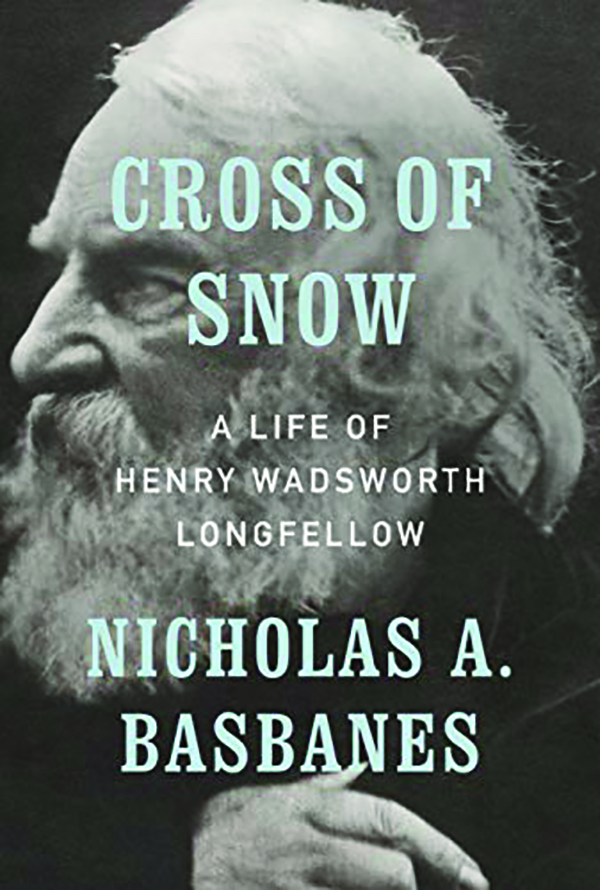In the 19th century, Henry Wadsworth Longfellow (1807-1882) stood astride the literary world like a giant. His work included some 420 published poems of every category and genre, among them such bestsellers as “Evangeline, A Tale of Acadie,” “The Song of Hiawatha,” “Paul Revere’s Ride,” and “Tales of a Wayside Inn.”
But with the dawn of modernism, free verse, and imagism, poets such as Walt Whitman, Ezra Pound, and T.S. Eliot became popular. Longfellow’s formalist poetry, with its strict meter and rhyme scheme, fell out of favor. Soon, he was excluded from the American canon.

Yet some critics pushed back against the anti-Longfellow sentiment. In the 1990s, Dana Gioia, who later became the director of the National Endowment for the Arts, began arguing for a reconsideration of Longfellow’s work. Howard Nemerov, J.D. McClatchy, Harold Bloom, and other prominent writers and scholars agreed. In 2005, Charles Calhoun published his highly regarded biography, Longfellow, A Rediscovered Life, which traced the rise and fall of Longfellow’s literary career.
Now, Nicholas Basbanes, an investigative reporter, editor, and award-winning writer, builds on Calhoun’s book with a new biography, Cross of Snow. Basbanes is particularly interested in showing how Longfellow’s literary career was influenced by his relationships, especially with his second wife, Frances Elizabeth Appleton, or Fanny. Fanny’s editing skills, Basbanes argues, made Longfellow a better writer.
Cross of Snow starts with Longfellow’s childhood in Portland, Maine. The second of eight children, he was devoted to his mother, who nurtured his love for literature. He began publishing poetry while studying at Bowdoin College, where he decided to reject his father’s advice to take up law and focused instead on literature.
After college, he studied foreign languages in Europe, returning to teach at Bowdoin and later at Harvard. In 1839, three years after he took a position at Harvard, he published Voices of the Night, his first collection of poems. He became friends with luminaries such as Nathaniel Hawthorne, Charles Dickens, Edgar Allan Poe, Ralph Waldo Emerson, and Sen. Charles Sumner, who encouraged Longfellow’s pacifist and abolitionist views.
Yet the focus of Basbanes’s account is Longfellow’s relationship with Fanny. After his first wife died, he fell in love with Fanny, who inspired his autobiographical novel, Hyperion, which featured a lovelorn protagonist rejected by a woman of genius who is not “in the least” beautiful. Fanny spurned his advances for seven years, possibly because she disliked the way she was portrayed in the novel. Basbanes does not explain how the rift was healed, but he suggests her reasons lie in parts of a letter that the family refused him permission to use. They married in 1843, and Fanny became the mother of their six children, his editor, his first reader, and his muse. During their 18 years of marriage, Longfellow published some of his best work.
Quoting liberally from her numerous letters, travelogues, and journals, Basbanes reveals Fanny to be a discerning observer with a sharp eye for evocative details. He suggests that although Fanny might have been Longfellow’s Beatrice (Dante’s inspiration for his Divine Comedy), she was also to some extent his co-author.
Fanny died in 1861 at age 44 after wax from a dripping candle, which she was using to seal envelopes, ignited her dress. Longfellow himself suffered severe burns after trying and failing to extinguish the flames. At first, Longfellow felt unable to create new poems and spent his time translating the Divine Comedy. (Basbanes notes that the critic Harold Bloom preferred Longfellow’s translation “to all the current versions.”)
When Longfellow died two decades later, he had produced an enormous body of work that included epic poems, stories, essays, and translations of literary works from many languages. He had a worldwide following, and in England, where he outsold Robert Browning and Alfred Lord Tennyson, he was a favorite of Queen Victoria. After his death, he was honored with a bust in the Poet’s Corner of Westminster Abbey.
Basbanes’s title alludes to Longfellow’s posthumously published poem “The Cross of Snow,” in which the poet, writing 18 years after Fanny’s death, mourns the loss of his wife:
That, sun-defying, in its deep ravines
Displays a cross of snow upon its side.
Such is the cross I wear upon my breast
These eighteen years, through all the changing scenes
And seasons, changeless since the day she died.
Although the details, drawn from family photos, journals, books, letters, and archives, occasionally weigh down the writing, Basbanes generally keeps things moving — at times using cliff-hanger chapter endings. He adds suspense by setting Longfellow’s work against the friction between North and South. Both Longfellow and Fanny were against the Civil War, with Fanny extensively editing Longfellow’s anti-war poem “The Arsenal at Springfield.”
“The Building of the Ship,” a poem that Basbanes excerpts, suggests Fanny’s influence and the role of Longfellow’s friends in shaping his poetry. The poem was originally about ship-building. But after hearing an impassioned speech by Sumner, a staunch abolitionist, Longfellow added lines which later brought Abraham Lincoln to tears, and which are still poignant today:
Sail on, O Union, strong and great!
Humanity with all its fears,
With all the hopes of future years,
Is hanging breathless on thy fate!
Diane Scharper is the author or editor of seven books. She teaches memoir and poetry for the Johns Hopkins University Osher Program.

